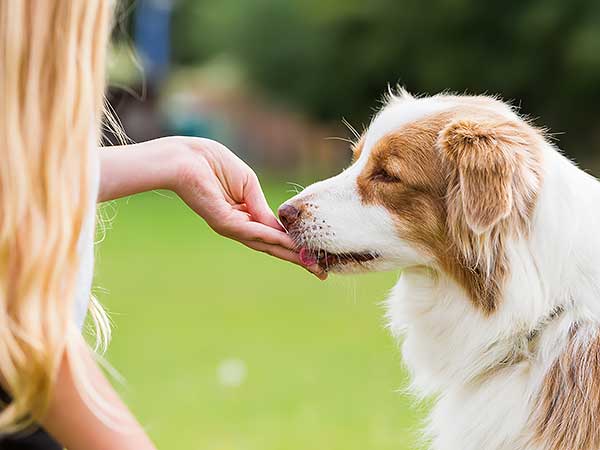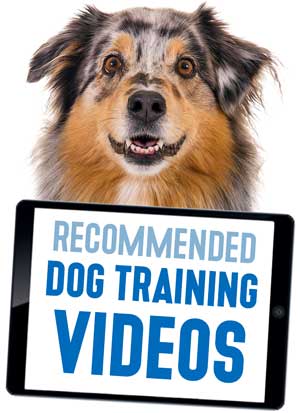
Positive Dog Training Methods For Your Australian Shepherd
The purpose of this piece is to introduce people to the positive dog training approach and answer some common misconceptions about it as well. To the best of my knowledge one of the first people to use PR training was Jay Sisler back in the 50's. Who by the way, happened to train Aussies and is credited as being one of the founders of our great breed! He taught his dogs amazing tricks with kinder methods as opposed to the harsher techniques used by many in the 50's.
How Positive Dog Training Came About
Ivan Pavlov (a Russian physiologist, psychologist and physician) was one of the forerunners of studying animal behavior. He proved that dogs form associations using a bell, a dog, and some tasty treats. He rang the bell then gave the dog a treat. After awhile the dog would salivate when it heard the bell in anticipation of the treat. Similarly, you can teach a dog to sit, stay, come, etc. by forming associations with words and actions (and some treats of course). Pavlov died in 1936, more scientists studied animal behavior (I‘m not going to bore you with any of that), and eventually the concept of positive reinforcement training (PR) developed. But rest assured, there have been many scientific studies of dog behavior and how dogs react to positive dog training methods—it's been proven to work.

Christian Müller / stock.adobe.com
Positive dog training approaches use rewards, like treats, to encourage the desired behavior.
What Is Positive Reinforcement Dog Training?
With positive dog training techniques, dogs work for a reward (either a toy or a food treat) and receive plenty of verbal praise. You are essentially rewarding a desired behavior to encourage it. The reason positive dog training methods work so well is because dogs love to please their owners. You need only find what specific food motivates your dog.
Take for example teaching the sit. You use a treat to lure the dog into position, when its butt hits the ground you say "yes" and give it the treat. After a few times you replace the yes with the verbal cue sit. Another minute of this, and you can stop luring the dog into position but continue to treat. You are making training a fun experience for your dog. Additionally, your dog is more likely to carry out these desired behaviors on their own in hopes of getting treats. Positive reinforcement dog training is NOT forcing your dog into position, then giving it a treat.
The Original Dog Whisperer
No, I'm not talking about National Geographic's Cesar Millan. I'm talking about the original dog whisperer, Paul Owens. I don't want to offend any Cesar fans, but he kind of stole the title from Owens who was calling himself a dog whisperer long before Cesar Millan was a household name. Paul helped popularize PR training and has been at it for 35 years. You might say he is the polar opposite of Cesar in terms of training methods. He has helped many people with their dogs by using his non-violent approach to training. Other notable PR trainers are Dr. Ian Dunbar, Dr. Sophia Yin, and host of Animal Planet's "It's Me Or the Dog" Victoria Stilwell.
Positive Dog Training Misconceptions
The following are some misconceptions I hear a lot about positive dog training methods:
Misconception #1: "PR trainers are too kind to their dogs and never use punishment."
They do in fact use a form of punishment called negative reinforcement. If a dog exhibits an undesirable behavior, you simply don't reward the dog. For example: A lot of people don't like their dogs to jump on them as a greeting. To fix this you would ignore the dog. It is seeking attention, so by ignoring the dog it learns that it won't get attention by jumping on you. You would then teach it to sit politely for greetings. This is called counter conditioning. The dog learns "If I jump I get no attention, if I sit I get lots of attention."
Misconception #2: "PR trainers treat dogs like babies."
This simply isn't true. PR trainers know that a dog is a dog and a kid is a kid. They are just using knowledge to train dogs as opposed to other methods that rely on force.
Misconception #3: "PR trainers can't handle an aggressive dog."
Again, this just isn't true. They use a method called counter conditioning. For example: A dog doesn't like getting its toenails trimmed so reacts with aggression. You would feed the dog a treat while touching the clippers to it's nail. You would then feed it while putting the clippers over the nail, then treat and clip. This is similar to what Victoria Stilwell implements to deal with dog on dog aggression. She has the dog sit calmly while in the proximity of another dog. The aggressive dog gets treats for calm behavior and she slowly gets closer to the other dog. These dogs are learning to associate good things with the things they used to be aggressive towards.
Please keep in mind there are many ways PR trainers deal with aggressiveness in dogs. I'm not going to explain them all for you (I could write an essay) but one thing in common with all the methods is remaining calm and keeping the dog below it's threshold. A dog that passes it's threshold effectively can't learn anything new. This is why calm methods work better than harsh ones. Harsh methods may get immediate results but the dog is usually over it's threshold and hasn't learned anything, causing the behavior to recur.

Start with our official ebook Guide To Australian Shepherd Training & Care. It was created by Aussie lovers for Aussie lovers. You can read this practical guide on any computer, tablet, or smartphone.
Misconception #4: "PR training is bribery and the dog will always expect a treat."
I guess there's no denying it. In early stages of positive dog training, it is a type of bribery. But once the dog knows the command really well, you can start to phase out the treat. This increases the reliability of the dogs responses because it never knows when it'll get the treat. It will continue to obey the command in hopes that the next time will result in a treat. After a few days of treating with less frequency, you can cut out the treats all together. By now the command is second nature to the dog.
Conclusion
Positive dog training methods work especially well for sensitive dogs, so it is a great choice for training your Australian Shepherd. Take me for example, my Aussie is 6 months old. In the 4 months I've had him, he's learned to sit, stay, come, lie down, take a bow, back up, give it, leave it, go find, stand up, get off, walk nice (with hand signals for most of those) and knows the difference between a soccer ball, baseball, and tennis ball. I had no previous background in dog training, but by implementing the easy methods of positive reinforcement dog training, my dog has learned so much. Remember that training is an ongoing process that continues for the life of your dog. Just be sure to do your research before deciding on a training method that's right for your dog.
Have Dog Training Questions?
Check out these introductory dog training videos...
I want my dog to stop being aggressive.
I want some help training my new puppy.
I want my dog to stop barking at everything.
Get Australian Shepherd Info, Website Updates, Special Offers, and Cartoons...
FREE GIFT
You'll also receive a free copy of the ebook
My Everyday Dog Training Tools
by professional dog trainer Daniel Abdelnoor, "Doggy Dan"











 Loading Image...
Loading Image...